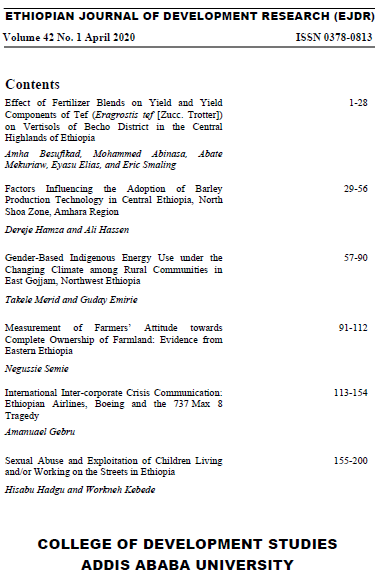Sexual Abuse and Exploitation of Children Living and/or Working on the Streets in Ethiopia
Keywords:
Sexual abuse, exploitation, children living on the streets, EthiopiaAbstract
Children living/working in the streets across Ethiopia face sexual abuse and
exploitation (SAE). This study examined the characteristics, typology and
magnitude of SAE faced by children. It used quantitative and qualitative
approaches to generate primary data. A total of 661 children (male, 42.8% and
female, 57.2%) aged from 11 to 17 years and living/working in the streets across
21 cities from nine regional states and chartered cities of Ethiopia participated in
this study. A total of 210 relevant stakeholders were also included in the study. The
adapted version of “The Child Abuse Screening Tool” (ICAST-C) was employed to
generate data from children. Key Informant Interview (KII) and Focus Group
Discussion (FGD) were used for collecting data from the stakeholder participants.
Findings suggested that the most prevalent form of SAE was verbal sexual abuse
(27.1%), followed by molestation (23.0%) and exposure to pornography (19.4%).
The least prevalent types were child trafficking (2.10%), forced commercial sex
work (2.40%) and forced or induced marriage (3.50%). The study showed that the
prevalence of SAE against children living/or working on the streets in different
parts of Ethiopia was evident. The study highlighted that a significant proportion
of children living/or working on the streets faced multiple instances of SAE with
26.5% of the children reporting two or more types of SAE. The current study
recommends the reinforcement of alternative care solutions for children in
collaboration with relevant stakeholders and through the allocation of further
resources.
Downloads
Published
How to Cite
Issue
Section
License
Copyright (c) 2022 Hisabu Hadgu, Workneh Kebede

This work is licensed under a Creative Commons Attribution 4.0 International License.


